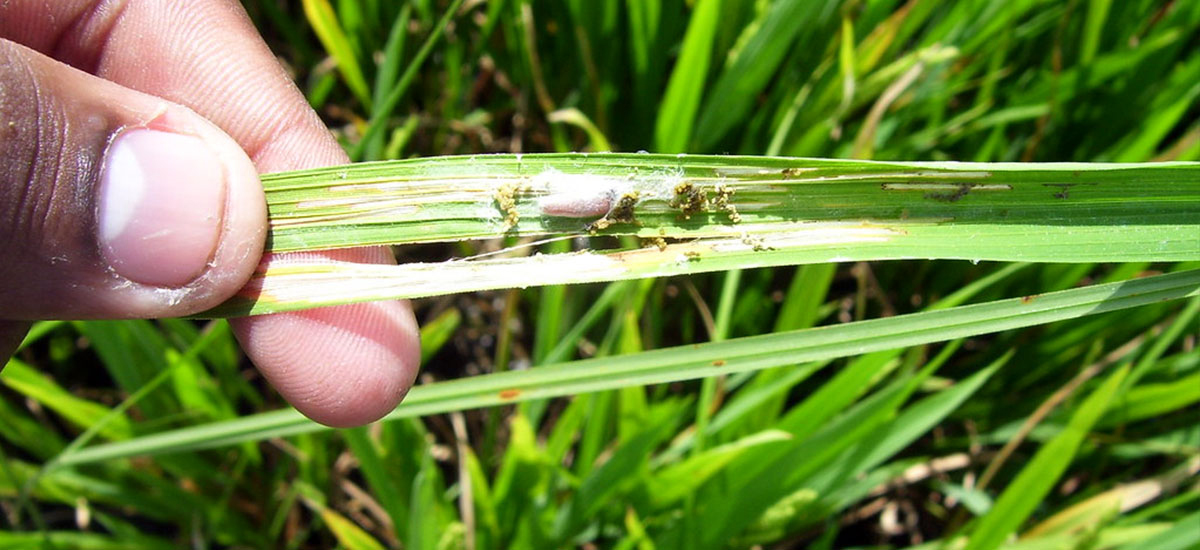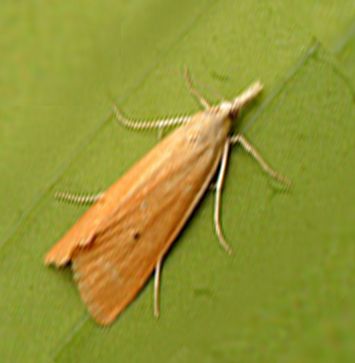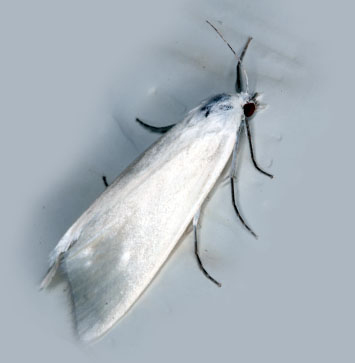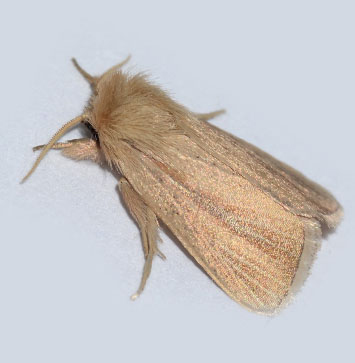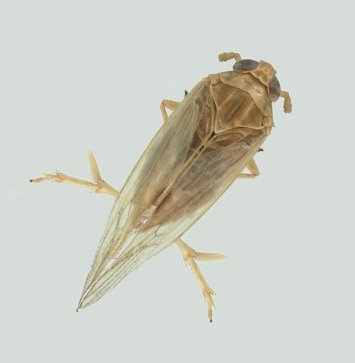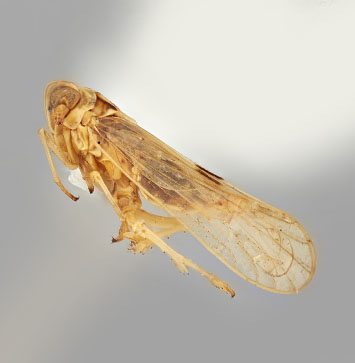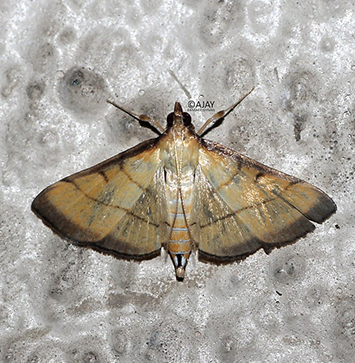
Back>Rice

Rice is grown in fertile lands of Punjab, Sindh and Balochistan regions where millions of farmers rely on rice cultivation as their major source of employment. Among the most famous varieties grown in Pakistan include the Basmati, known for its flavour and quality. Pakistan is a major producer of this variety
Scirpophaga incertulas
تنے کی زرد سنڈی
RICE
Rice stem borers can infest rice plants from seedling to maturity. They are common and destructive usually have a high degree of host specificity. The borers cause huge economic losses.
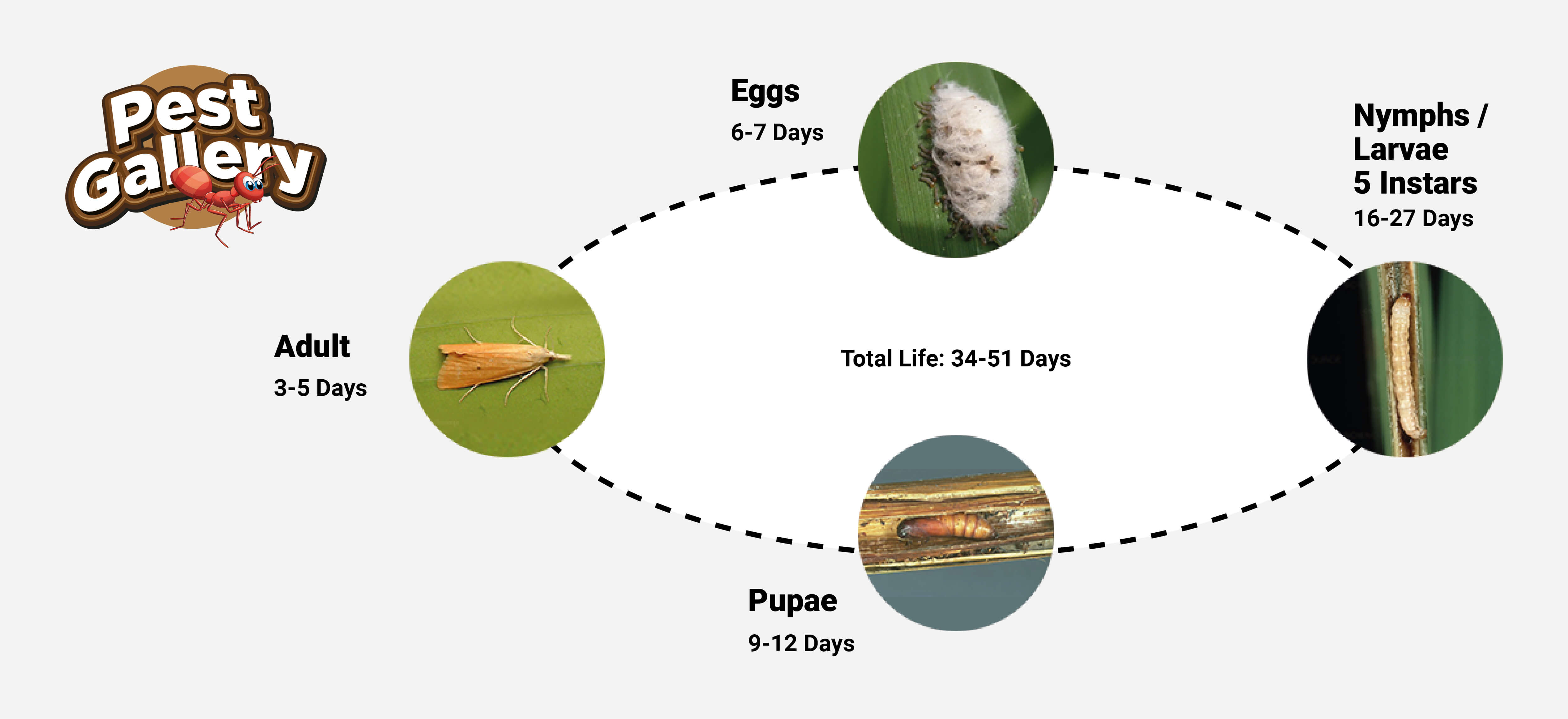
Scirpophaga incertulas
تنے کی زرد سنڈی
RICE
ETL: 5% Dead Heart or 8-10 Adults per Trap per Night
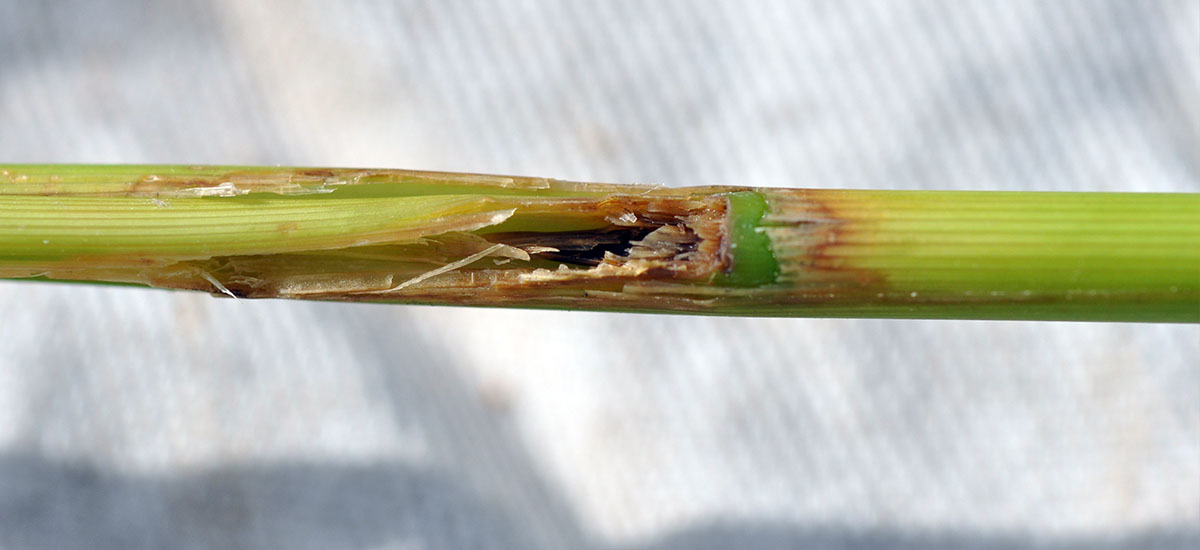
Scirpophaga incertulas
تنے کی زرد سنڈی
RICE
Borers larvae attack by boring the inner portion of leaf sheaths. At this stage, the symptom of damage is the longitudinal yellowish white patches at the feeding sites on the leaf sheath. The subsequent boring of the stem by caterpillars often leads to severing of the apical plant parts from the base. As a result, the central leaf whorl does not open, turns brown and dries. The lower leaves, however, may still look green and healthy. This condition is known as "dead heart" and the affected tillers do not bear panicles. if the detachment of growing plant parts takes place after panicle initiation, the panicles may not emerge, or these that have already emerged, may not produce grains. Such panicles are noticeable in the field by bearing empty grains, being erect and white. They are termed "white heads".
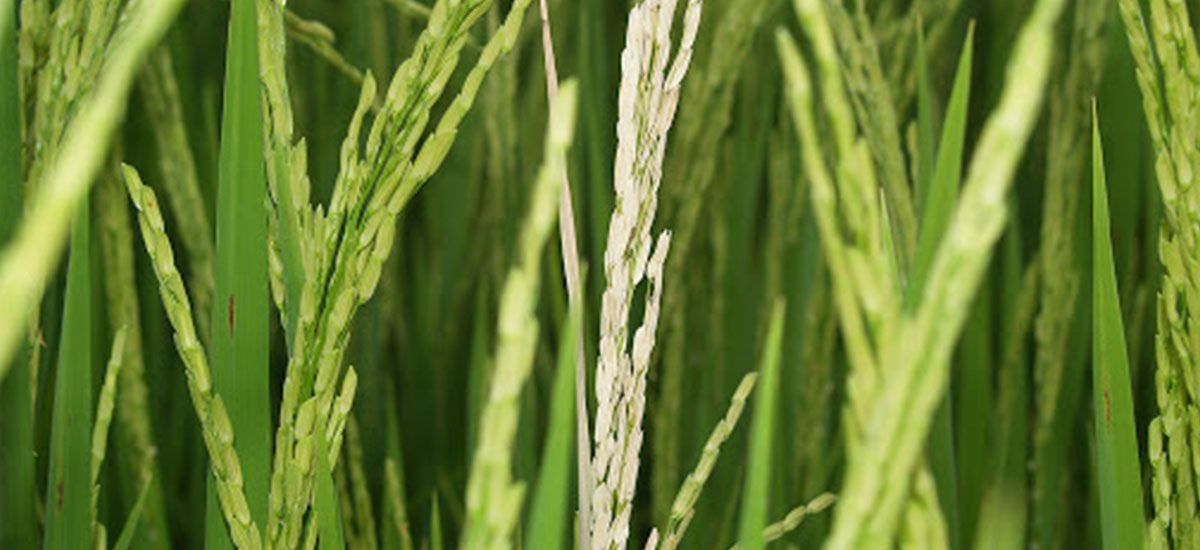
Scirpophaga innotata
تنے کی سفید سنڈی
RICE
Rice stem borers can infest rice plants from seedling to maturity. They are common and destructive usually have a high degree of host specificity. The borers cause huge economic losses.
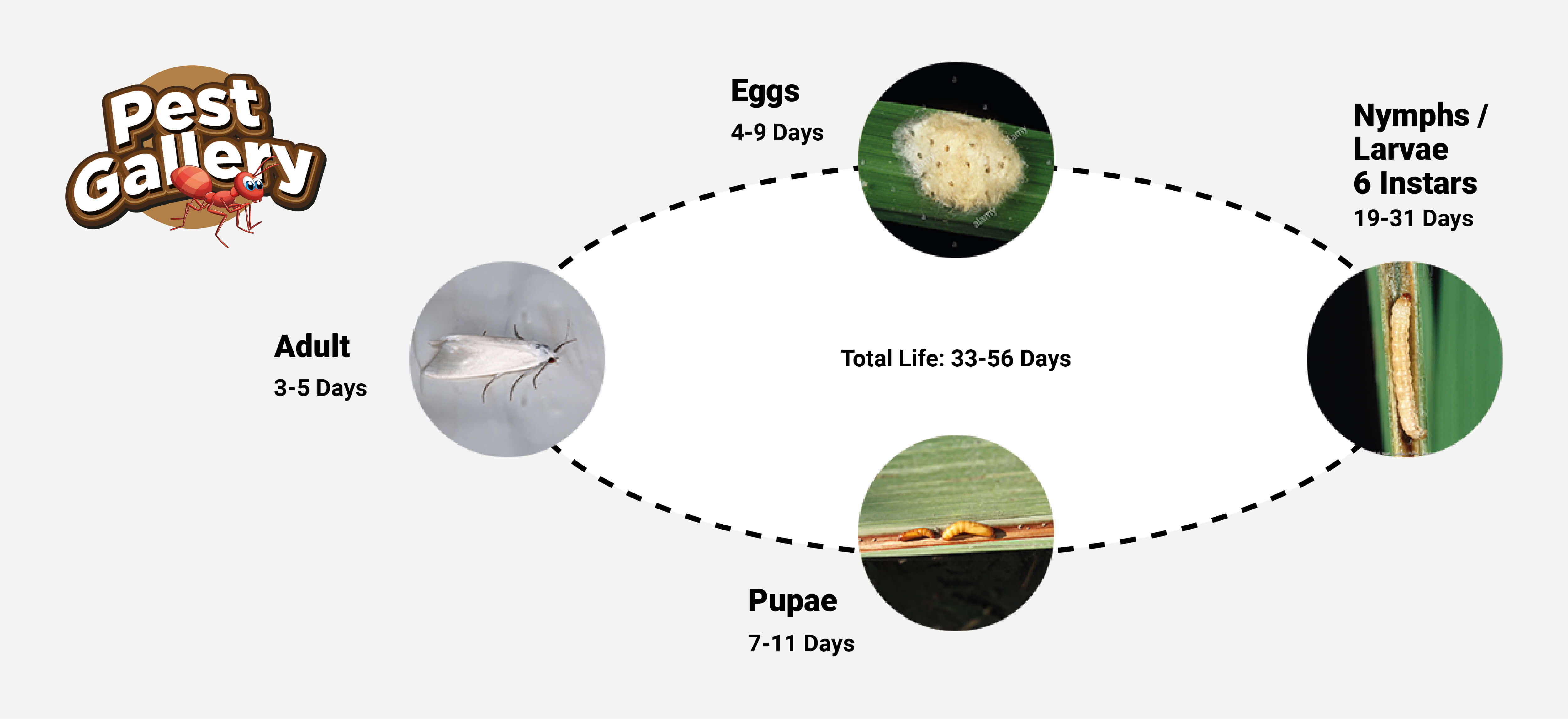
Scirpophaga innotata
تنے کی سفید سنڈی
RICE
"5% Dead Hearts or 8-10 Adults/Trap/Night"
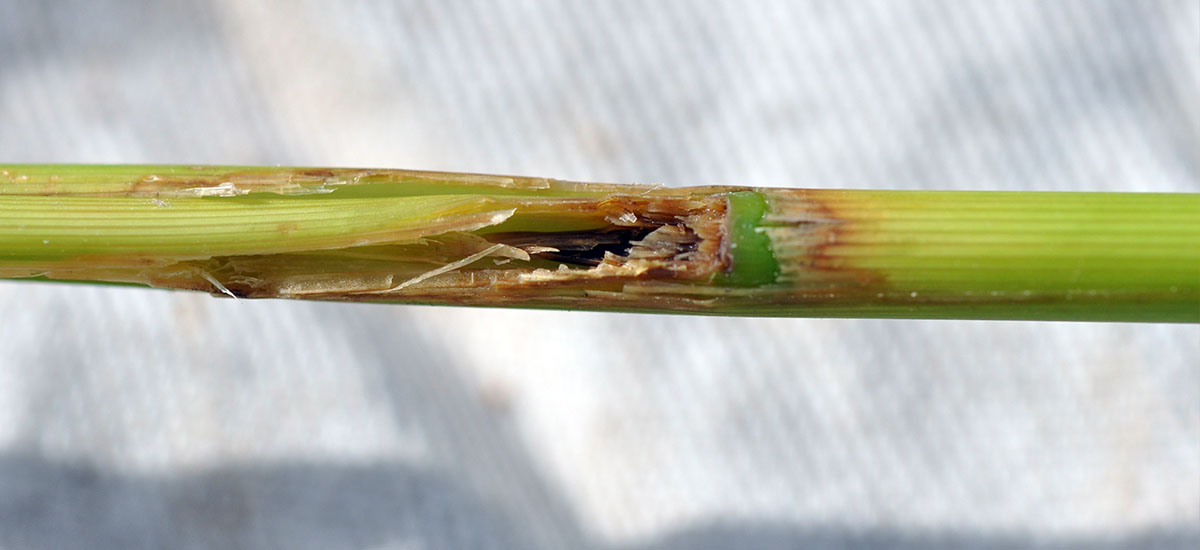
Scirpophaga innotata
تنے کی سفید سنڈی
RICE
Borers larvae attack by boring the inner portion of leaf sheaths. At this stage, the symptom of damage is the longitudinal yellowish white patches at the feeding sites on the leaf sheath. The subsequent boring of the stem by caterpillars often leads to severing of the apical plant parts from the base. As a result, the central leaf whorl does not open, turns brown and dries. The lower leaves, however, may still look green and healthy. This condition is known as "dead heart" and the affected tillers do not bear panicles. if the detachment of growing plant parts takes place after panicle initiation, the panicles may not emerge, or these that have already emerged, may not produce grains. Such panicles are noticeable in the field by bearing empty grains, being erect and white. They are termed "white heads".

Sesamia inferens
تنے کی گلابی سنڈٰی
RICE
Rice stem borers can infest rice plants from seedling to maturity. They are common and destructive usually have a high degree of host specificity. The borers cause huge economic losses.
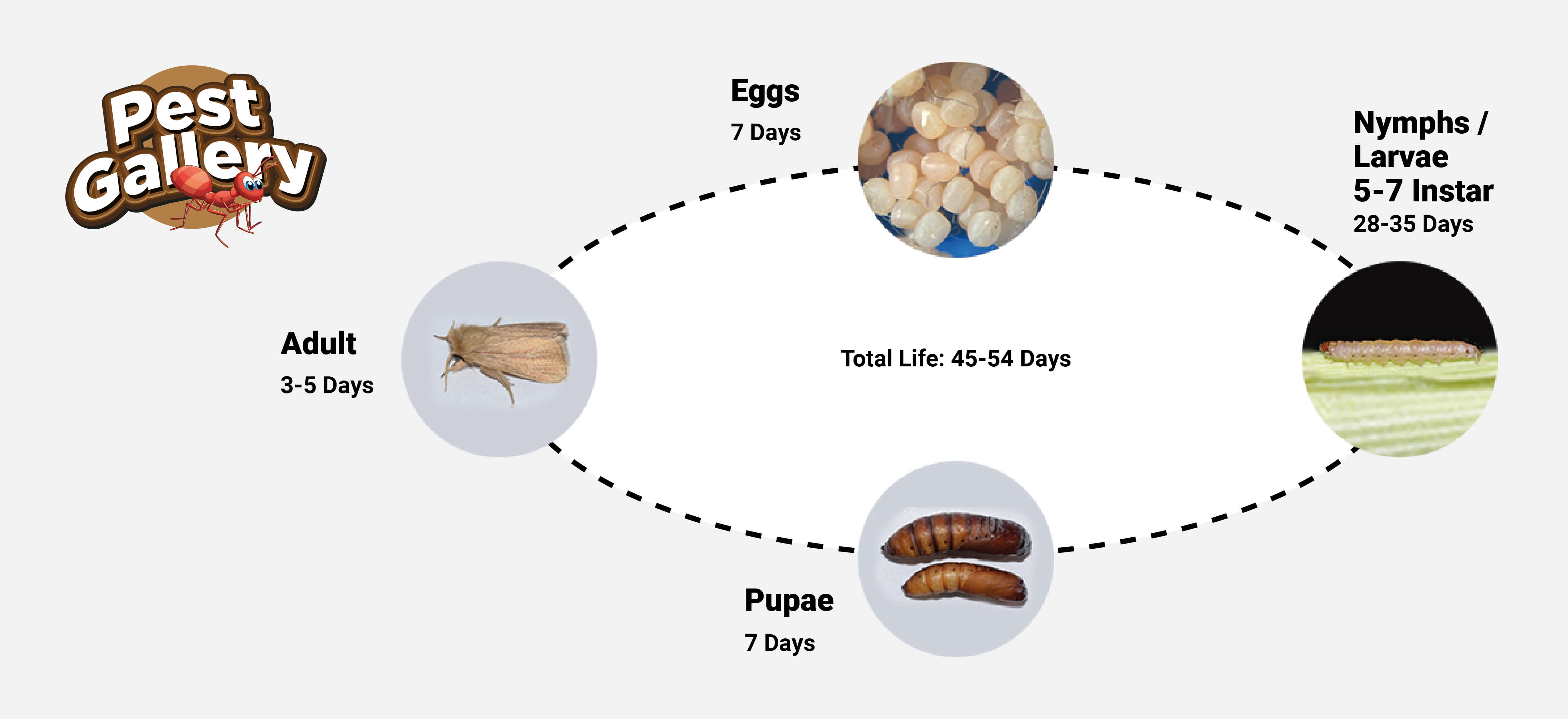
Sesamia inferens
تنے کی گلابی سنڈٰی
RICE
5% Dead Heart or 8-10 Adults per Trap per Night
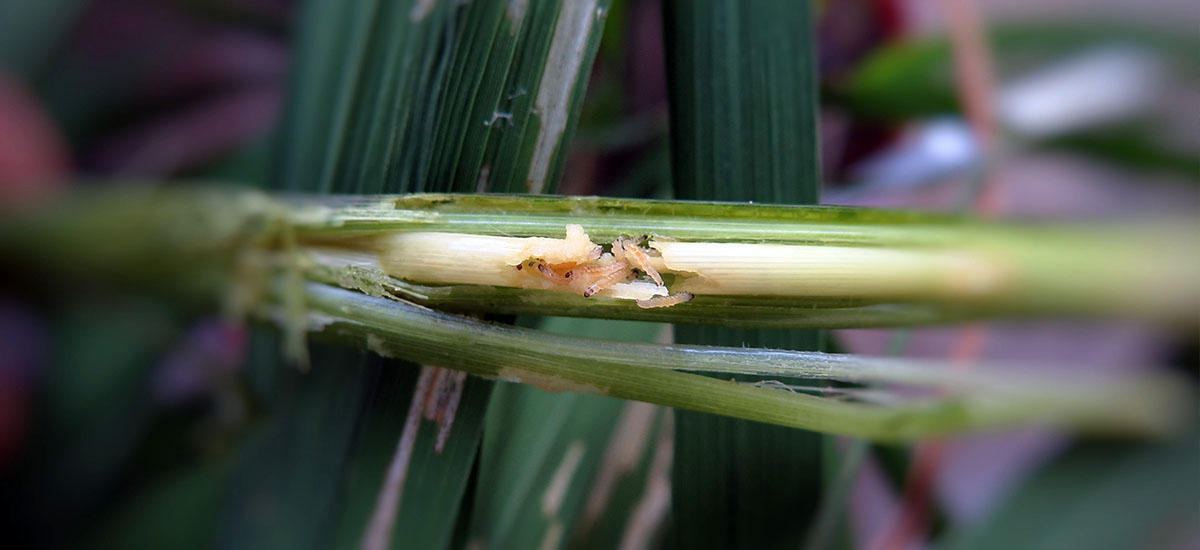
Sesamia inferens
تنے کی گلابی سنڈٰی
RICE
Borers larvae attack by boring the inner portion of leaf sheaths. At this stage, the symptom of damage is the longitudinal yellowish white patches at the feeding sites on the leaf sheath. The subsequent boring of the stem by caterpillars often leads to severing of the apical plant parts from the base. As a result, the central leaf whorl does not open, turns brown and dries. The lower leaves, however, may still look green and healthy. This condition is known as "dead heart" and the affected tillers do not bear panicles. if the detachment of growing plant parts takes place after panicle initiation, the panicles may not emerge, or these that have already emerged, may not produce grains. Such panicles are noticeable in the field by bearing empty grains, being erect and white. They are termed "white heads".
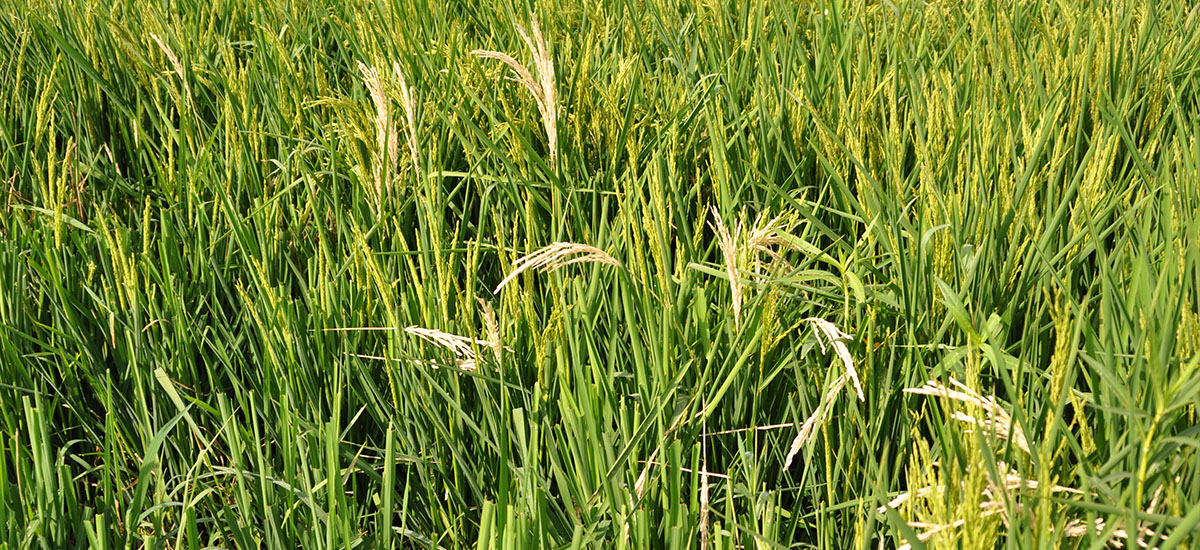
Nilaparvata lugens
بھورے رنگ کا تیلہ
RICE
The rice leaf and planthoppers have gained great economic significance in recent years. Interestingly, leaf and plant hoppers have assumed a pest status in Pakistan on all types of rice varieties. Population densities of these pests are on almost all types of varieties.
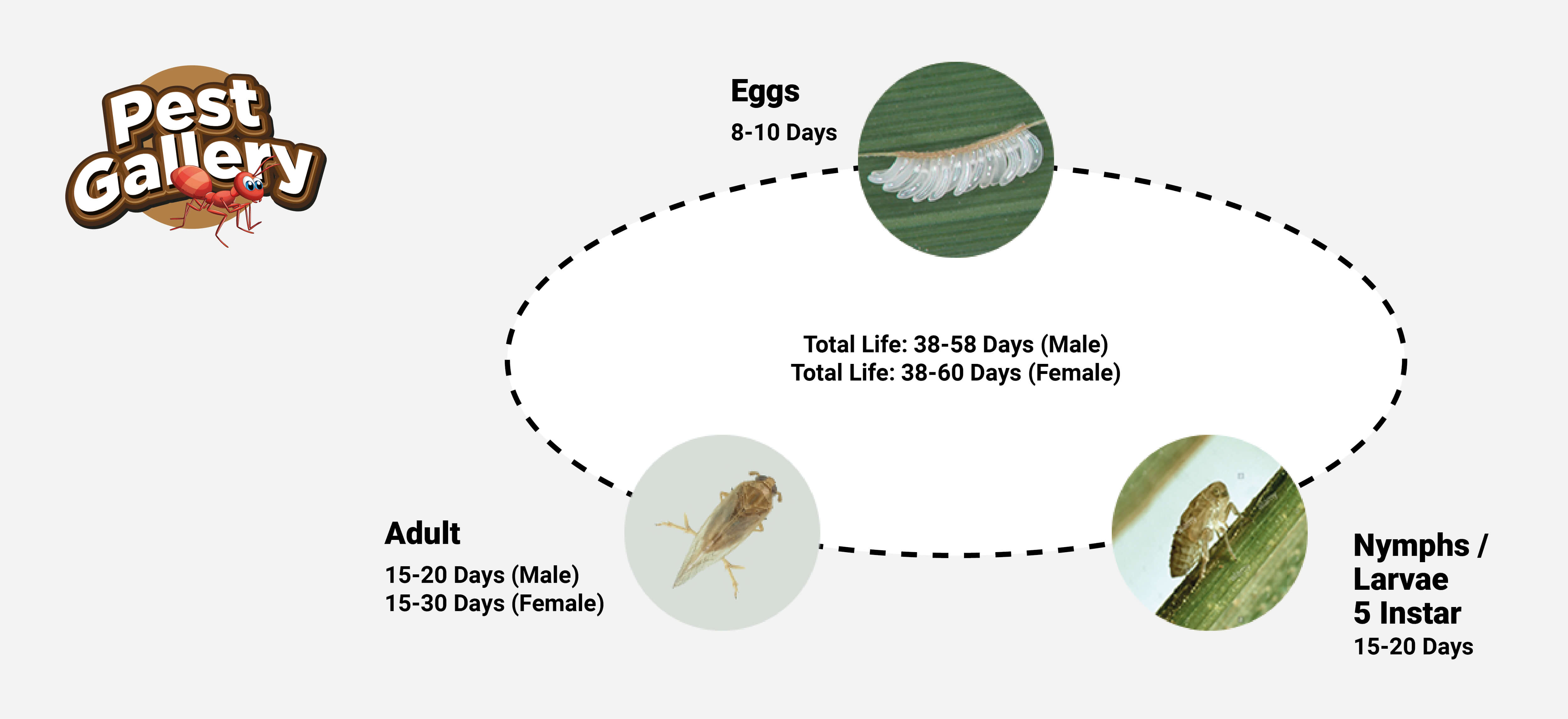
Nilaparvata lugens
بھورے رنگ کا تیلہ
RICE
ETL: 5 Adults or 10 Nymphs per Plant
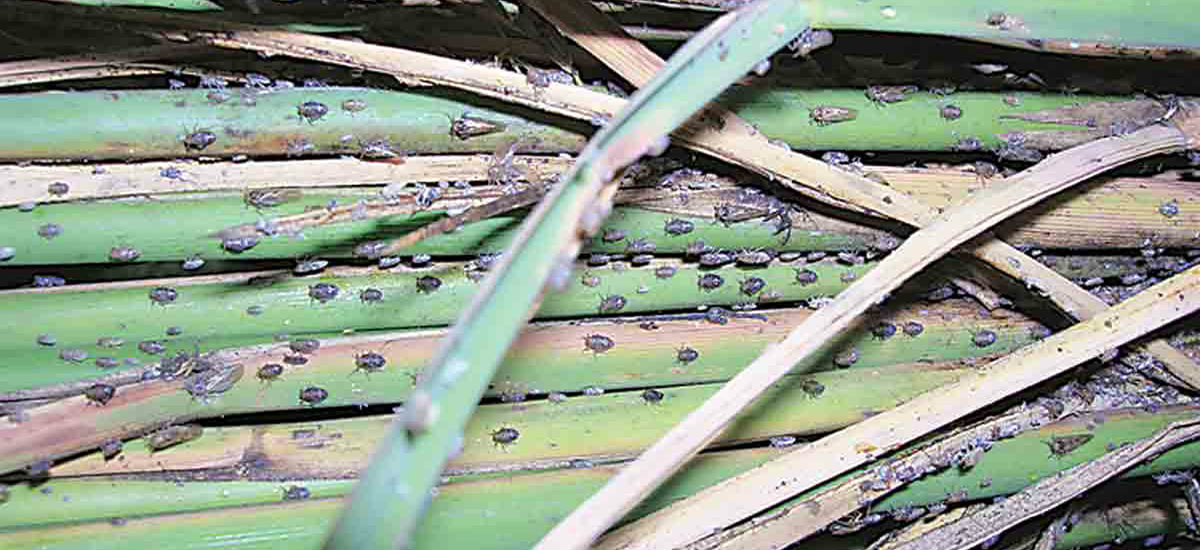
Nilaparvata lugens
بھورے رنگ کا تیلہ
RICE
The rice plants affected by plant hoppers appear uniform in large areas throughout the field. Both nymphs and adults suck plant sap. Both adult and nymph sucks sap primarily at the base of the rice plants which leads to yellowing of lower leaves reduced vigor and stunting of plants. At the feeding sites, numerous brownish spots appear. The attacked leaves soon turned yellow and their tips dry up. As the damage increase the pale yellow plants turn brownish, reduce in vigor, become stunted and ultimately dry up with out producing ears. This condition is known as "hopper burn".
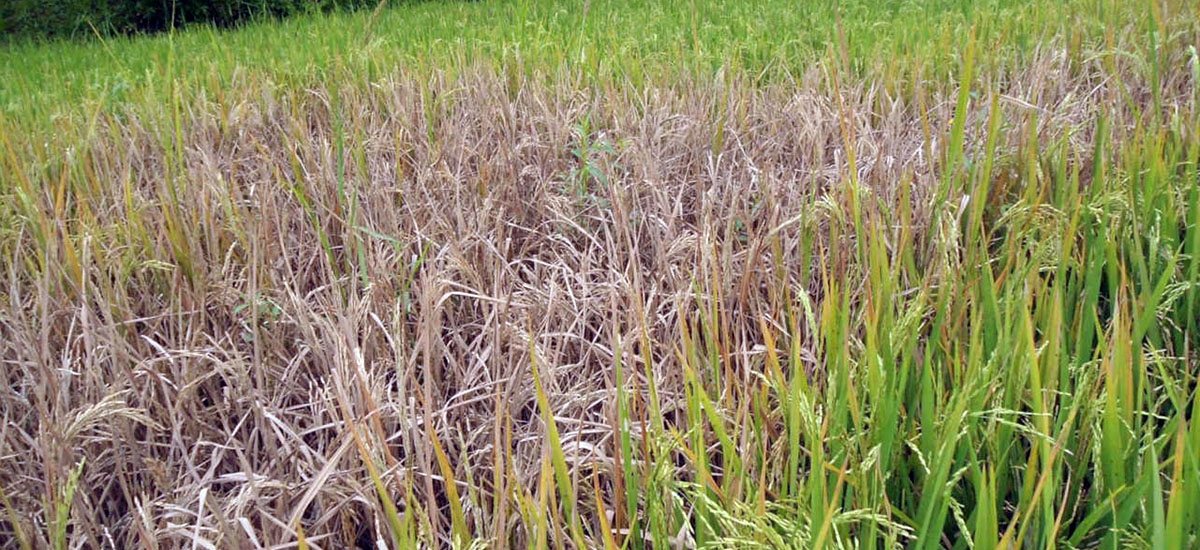
Sogatella furcifera
سفید پشت والا تیلہ
RICE
The rice leaf and planthoppers have gained great economic significance in recent years. Interestingly, leaf and plant hoppers have assumed a pest status in Pakistan on all types of rice varieties. Population densities of these pests are on almost all types of varieties.
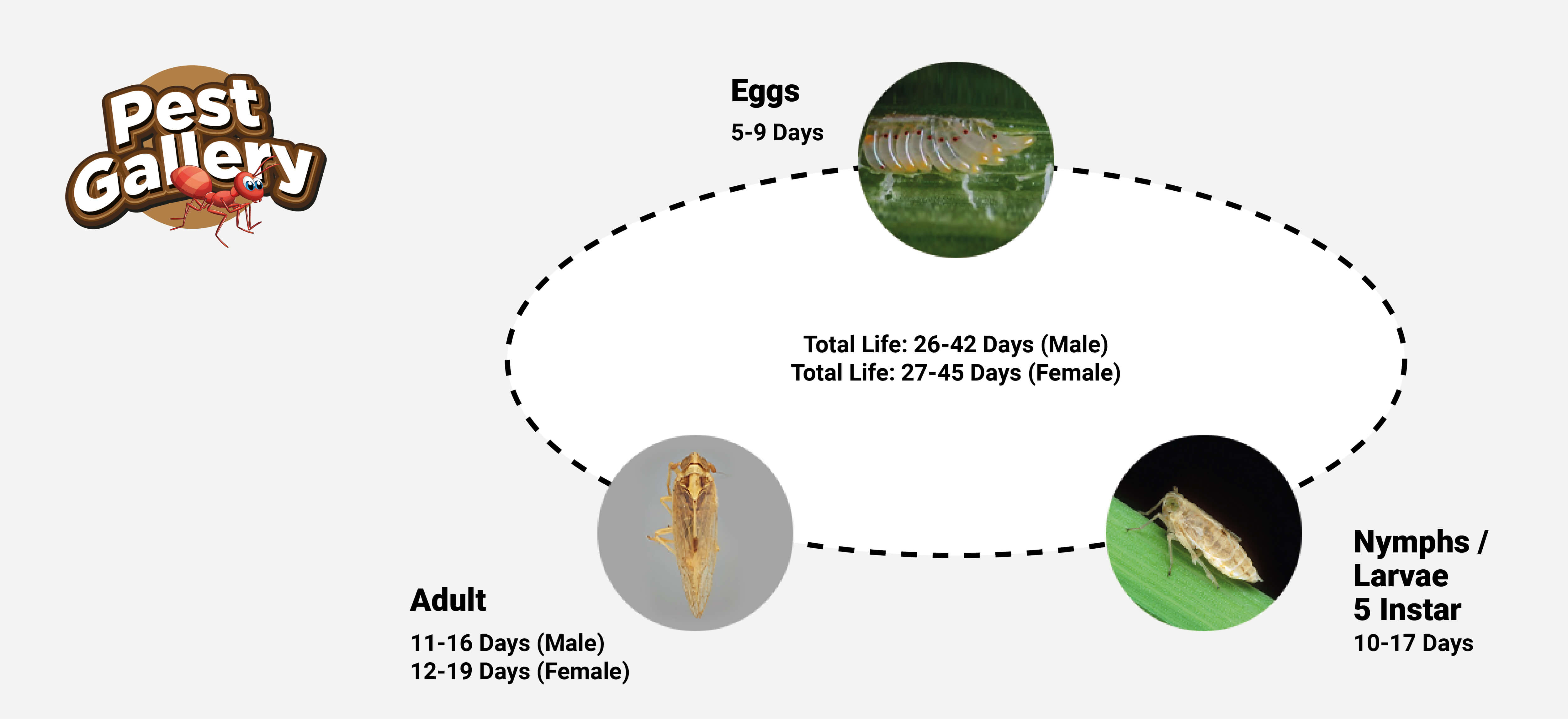
Sogatella furcifera
سفید پشت والا تیلہ
RICE
5 Adults or 10 Nymphs per Plant
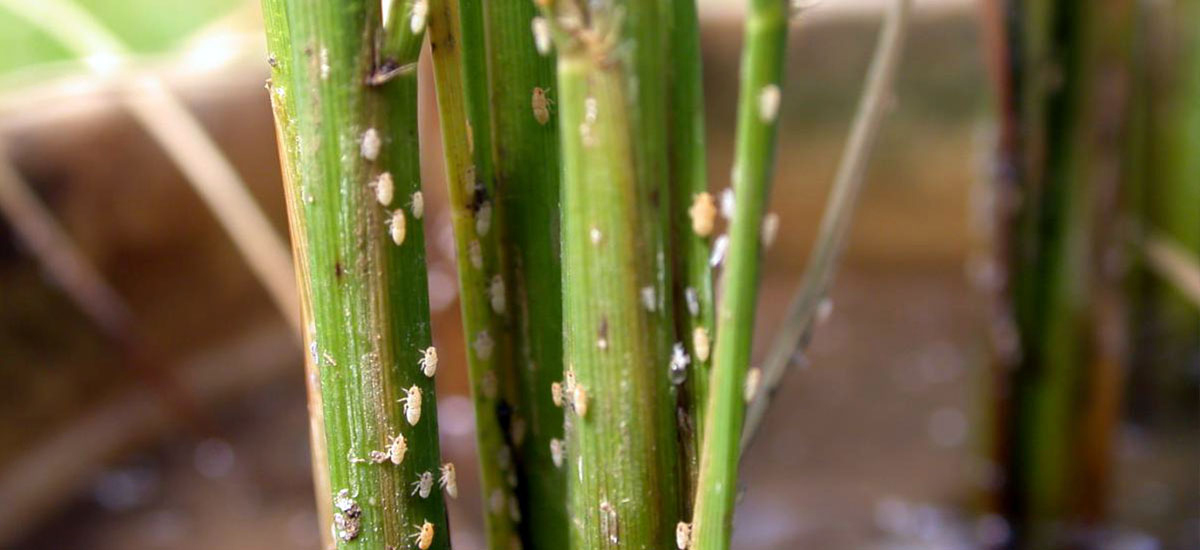
Nilaparvata lugens
بھورے رنگ کا تیلہ
RICE
The rice plants affected by plant hoppers appear uniform in large areas throughout the field. Both nymphs and adults suck plant sap. Both adult and nymph sucks sap primarily at the base of the rice plants which leads to yellowing of lower leaves reduced vigor and stunting of plants. At the feeding sites, numerous brownish spots appear. The attacked leaves soon turned yellow and their tips dry up. As the damage increase the pale yellow plants turn brownish, reduce in vigor, become stunted and ultimately dry up with out producing ears. This condition is known as "hopper burn".
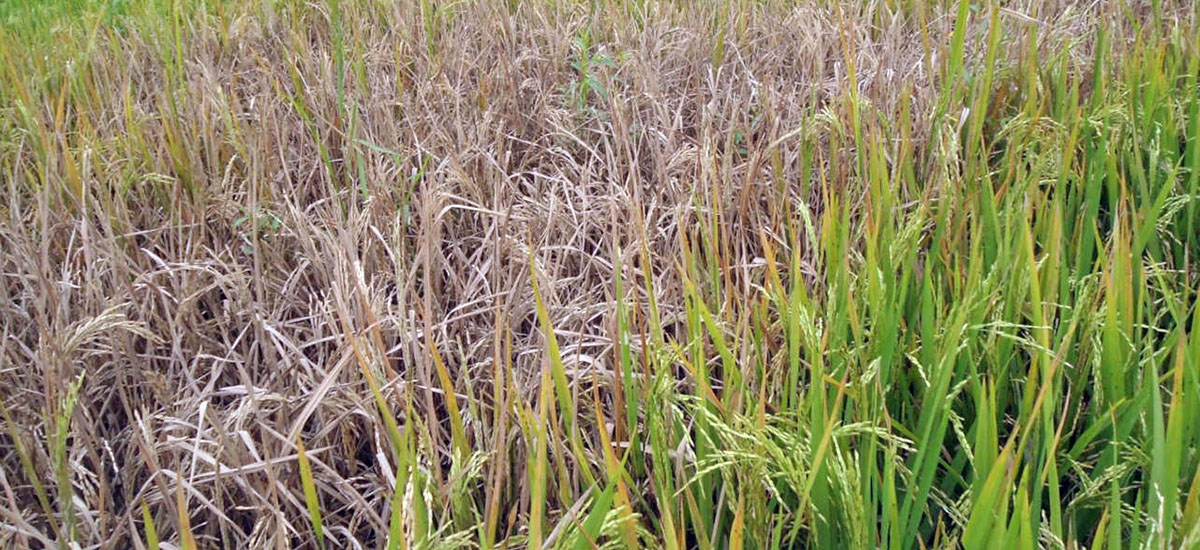
Cnaphalocrocis medinalis
پتا لپیٹ سنڈی
RICE
The rice leaf folders, earlier considered as a minor and sporadic pest of rice, appear to have become increasing! important with the spread of high yielding varieties and accompanying changes in cultural practices (Joshi, 1988) Misuse and excessive use of nitrogenous fertilizers hay been cited as the cause for high leaf folder populations.
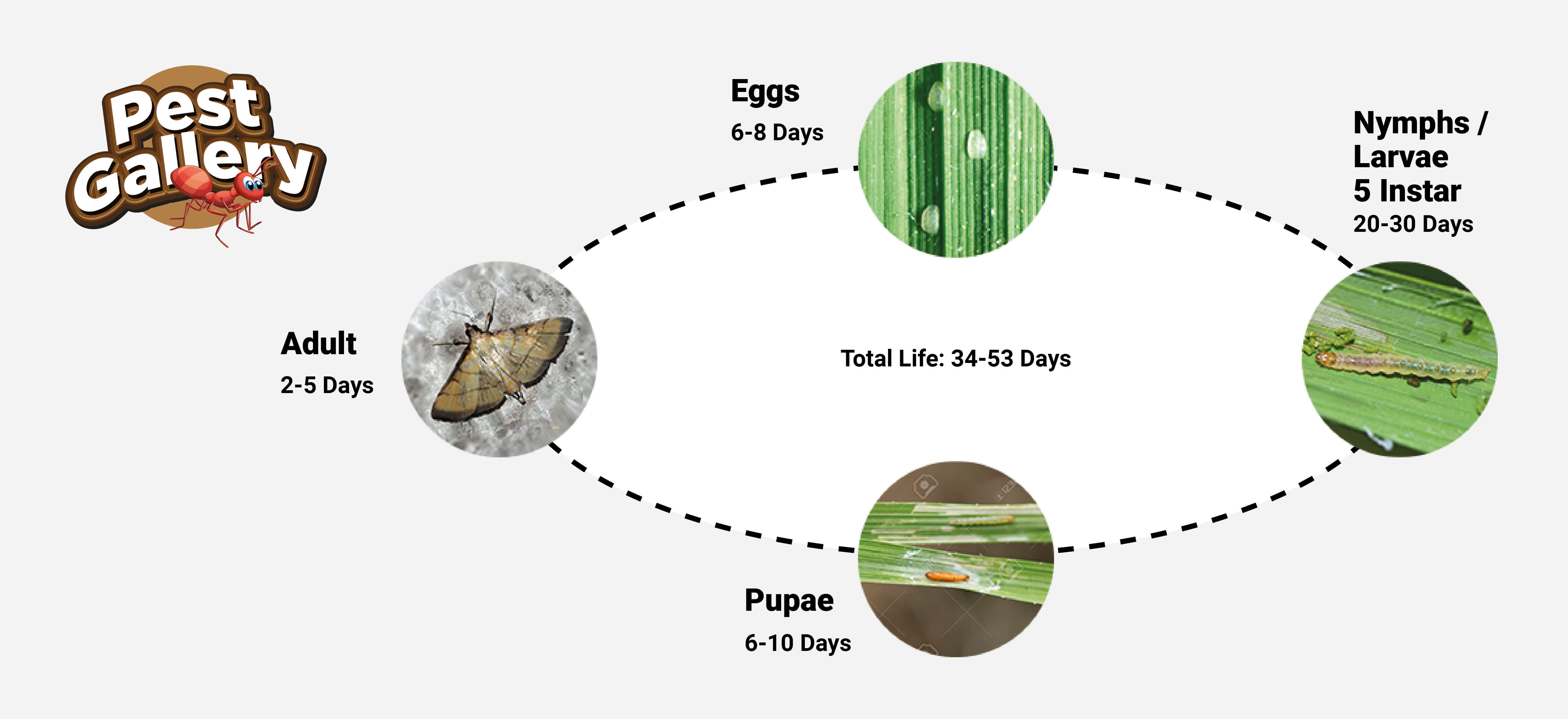
Cnaphalocrocis medinalis
پتا لپیٹ سنڈی
RICE
10% Leaf damage at vegetative Phase & 5% of Flag Leaf damage at Flowering
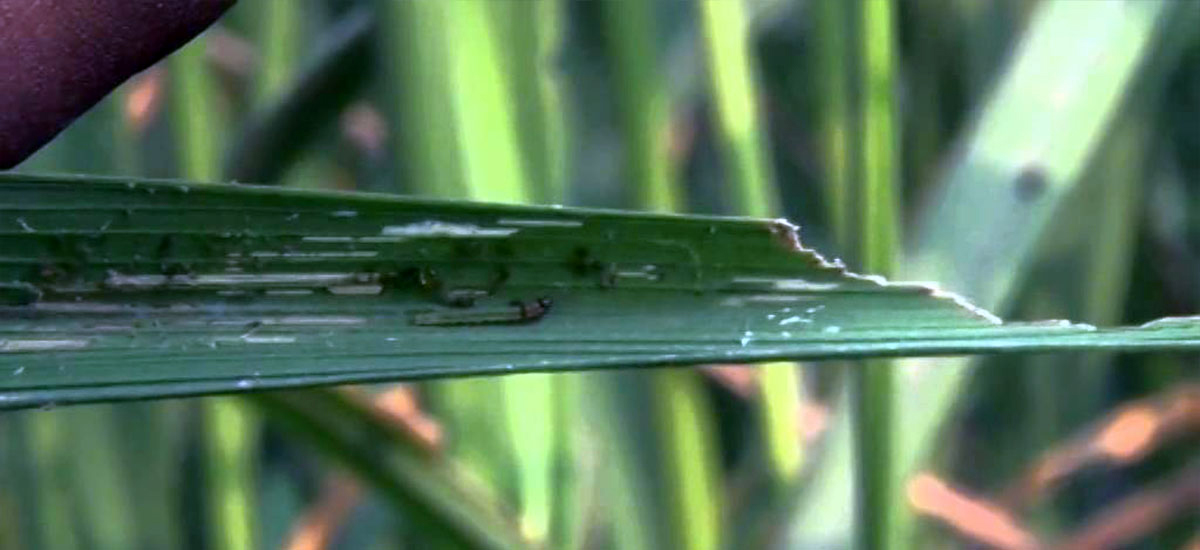
Cnaphalocrocis medinalis
پتا لپیٹ سنڈی
RICE
The larvae fold the leaves and scrape the green tissues of the leaves from within and cause scorching and leave drying. Each larva is capable of destroying several leaves by its feeding Under heavy infestation, each rice plant attacked may have several rolled leaves, which severely restricts its photosynthetic activity. When plants are attached in the flag leaf stage, grains may be partially filled.
